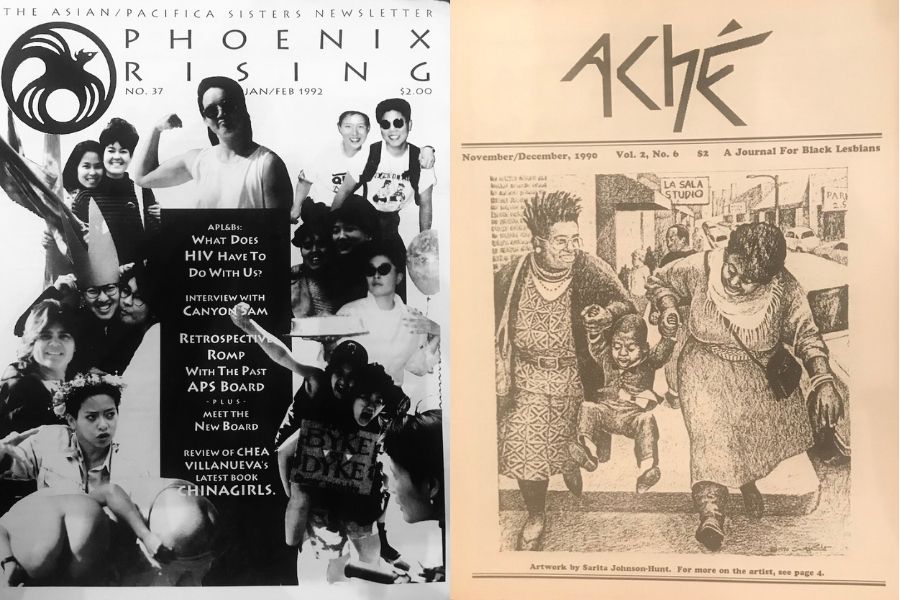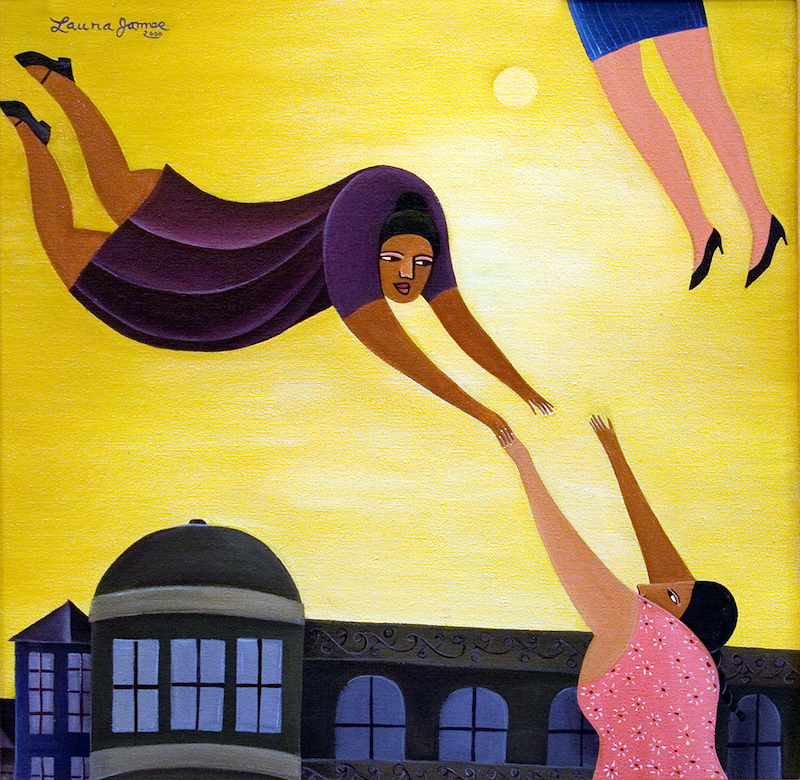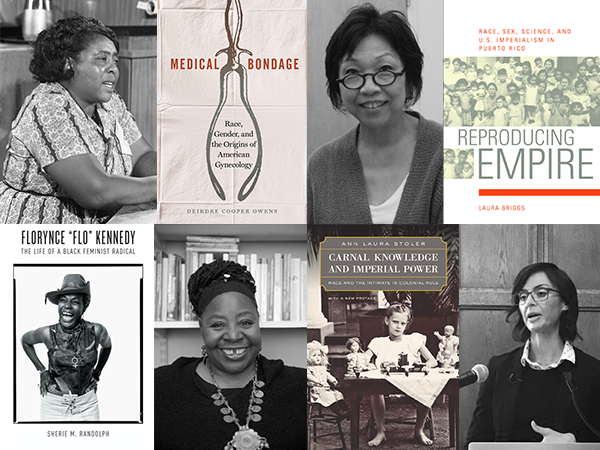My journey to understanding love and joy as powerful forces of resistance during a pandemic, with the help of Dr. Margo Okazawa-Rey aka DJ MOR Love and Joy.
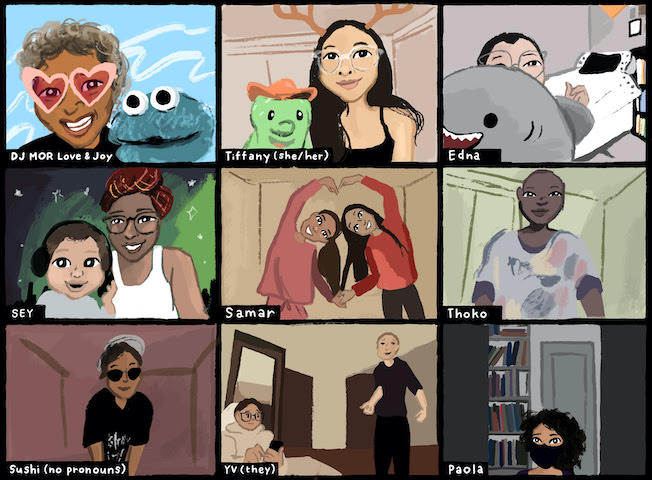
April 29, 2021
As feminists of color, we often find ourselves united by our pain, our struggles, and the perpetual violence we suffer at the hands of white supremacy, colonialism, and sexism. This sentiment has certainly rang true this past month following the Atlanta spa shootings, which claimed the lives of eight people, including six Asian women. It remains true in the aftermath of the recent mass shooting at a FedEx facility in Indianapolis, where eight were killed, including four Sikh community members. Tragedy has long united us, igniting intraracial and cross-racial alliances in the face of violence enacted against us by racist and patriarchial individuals and a white supremacist state.
Pain as a uniting force can be useful. It has the power to bring people into the struggle. When we are able to name the harms against us, we can then band together to protect ourselves against them. Our disappointment, grief, and righteous anger drives us to fight back and to imagine a better world in which we can thrive. But more and more I’ve found myself curious about the opposite: How can we unite based on our shared love, joy, and humanity?
This is the code I’ve been trying to crack throughout this pandemic, during a time period that has been defined by violence and negligence so ubiquitous I won’t even name it all. It’s been particularly difficult to see beauty, spark joy, and feel loved in this atmosphere of anxiety, cruelty, and death. But I had to try, because ultimately I am committed to my own survival. I was grateful when I began to find the answers within an intergenerational, transnational virtual dance party on Zoom hosted by feminist scholar and activist Dr. Margo Okazawa-Rey, aka DJ MOR Love and Joy, who has also contributed generously to this project of ours.
“I learned a lot about the importance of connecting through joy. Of course, what we share in this space often is not only joy—so many horrible things happened in this last year—but we kept dancing together, checking in with each other, trying to be there for each other, and smiling at each other. Seeing the joy in people’s faces (especially in BIPoC) gives me life.”
Sushi, 45
Vienna, Austria
The ongoing dance party, which in its short history has been titled “TRANSNATIONAL Feminist Dance Party for Life and Love” or “Listen and Dance Party for HOPE, Life and Love,” began in April 2020, soon after the country went into lockdown. However, I didn’t find my way to the space until late November, following an invitation from Dr. Okazawa-Rey during an Asia Society book club. Ever since, it’s become part of my weekly routine to log in on Thursday afternoons, dance around alone in my apartment, and connect with warmhearted strangers (now friends) from across the globe.
I sought the space out during a particularly depressed and despondent period in my life. I was intentionally trying to bolster my energy and open my heart when I found myself gravitating towards Dr. Okazawa-Rey’s spirit and her messages on embracing love and joy. While I’ve been unemployed and perpetually self-quarantining, oftentimes the dance parties are the first or only time during the day (or week) where I move my body freely, shaking it out of its usual slouched, slumped, and supine state. By being present enough in my body to dance for that one hour, I’m gently reminded of my own humanity—I am a person in a body that moves in these different ways. And watching windows of other people across continents, ages, and body types do the same thing reminds me of our collective humanity.
The parties are fairly simple: DJ MOR Love and Joy shares her audio and plays an hour of music from an international playlist with songs like “Djadja” by French-Malian artist Aya Nakamura; “I Will Survive” by Gloria Gaynor; “Enjoy Enjaami” by Tamil artists Dhee, Arivu, and Santhosh Narayanan; and other songs submitted by attendees. She sends the emails out in English, Spanish, and Arabic. The invite list has been built through her personal connections, though she has seeded out invitations in various virtual learning spaces she’s taken part in. Folks from across the U.S., South Africa, Palestine, Austria, and Switzerland, and more join in every week—each one responding to an invitation from Dr. Okazawa-Rey.
“It’s been a reminder of the importance of radical love, which DJ MOR just embodies and evokes. We absorb so much cynicism and fear, the release is necessary. Almost like a detox.”
Saaret, 35
Washington, D.C., U.S.A.
“I just invite people when I feel like there’s a good vibe,” she tells me. “That’s how other people have come in, basically really through word of mouth.”
The party initially began as a two-person dance party. Dr. Okazawa-Rey used to take walks with her friend Dr. Paola Bacchetta in Berkeley. But when COVID-19 hit, they started talking on the phone instead. Chatting on the phone turned into sharing music back and forth, which became the two of them dancing together virtually. Then they decided to invite their friends from across different time zones, which is how the party ended up happening in the morning for West coasters. A core group of around twelve usually show up, with people coming and going as they please.
“The boundaries are really loose: You can come any time; come as you are; you don’t have to turn on your camera,” Dr. Okazawa-Rey says. “It feels like a safe space. Nobody’s performing anything; nobody has to prove anything. It’s relaxation, and it’s fun. And that’s what I want.”
“In academic settings, all we do is talk, talk, talk. But with dancing, there’s no talk, there’s no language barrier,” she says. But DJ MOR Love and Joy didn’t always embrace her inner-dancing queen, and it’s only been within the last four years that she’s felt herself reconnecting with joy and love—often through the language of music and dancing. She recalls a time period in 2018 when her friend Miye, a student at Pitzer College, turned her onto Shakira and Spotify and reignited her love of music and dance. That year, she began to be known as the dancing professor or the “ethnic studies dancing queen” at Mills College, because she always insisted on playing music in classes and in the plaza.
“This is who I’ve come back to,” she tells me, sharing a photo of herself as an 8 year old with a giant grin on her face. “After an elliptical journey of going far from it and coming back to it, this has been my character, who I am, from very early on.”

A reconnection with our inner-children, that’s what we’re all looking for when we nurture ourselves, when we try to heal from a lifetime of wounds. Within that reconnection, we can embrace laughter, joy, self-care, love, creativity, and imagination more readily.
Through dancing and the connection I felt with all these new faces, I recognize the importance of physical movement and togetherness in our movement work, especially in a time of deep isolation, disconnection, and dehumanization. This is why protests, collective meetings, and talk circles are all such powerful spaces to be in, because of that sense of being physically united by the same cause. So when we come together with a commitment to fostering more love and joy, we open up a world of infinite possibilities and a world of beauty. The parties have reminded me that the work isn’t just about dismantling harmful institutions and systems, it’s also about loving and supporting one another so that we can all make it through to the other side of liberation. I no longer self-censor my tenderness, sentimentality, or vulnerability.
Yes, “the dancing is dancing,” Dr. Okazawa-Rey says, “and it’s also rooted in a serious commitment to deepening relationships with other people across time and space.” Reorienting her focus on love has been “about becoming more human,” she tells me. “It’s been an antidote to countering all the dehumanization that happens all around us.”
As a group, we’ve celebrated 80th birthdays, sent condolences to members who’ve lost loved ones, and mourned global tragedies such as the Atlanta mass shooting, the military coup in Myanmar, and all the COVID-19 losses. After Derek Chauvin’s murder conviction last week, we listened to protest anthems including Mavis Staples’ “We Shall Not Be Moved” and Edwin Starr’s “War.” For Lunar New Year, we danced to songs from Asia, including the Chinese New Year anthem “Gong Xi Gong Xi.”
“It’s really special to have this space where you can just show up as is, and cultivate joy. Especially during the past few months when my home country [Myanmar] has been under political terror, the virtual space has allowed me to find community, solace, and healing. Just to be present in the space and knowing that this community is also present brings a sort of comfort to me.”
Edna, 26
Los Angeles, California, U.S.A.
The Thursday following the mass shooting in Atlanta, I found myself logging into the weekly dance party out of habit. Half-way through the playlist, DJ MOR Love and Joy played “I’m Alive” by Celine Dion. The song, a celebration of being alive by the grace of someone else’s love, hit me hard. The lyrics, “When you bless the day / I just drift away / All my worries die / I’m glad that I’m alive,” brought me to tears, even as I swayed my body along to the music. It reminded me that my own survival is rooted in love—in my openness to receiving love and my desire to share love with others.
Writing this, I’m reminded of this sentence from The Combahee River Collective Statement: “Our politics evolve from a healthy love for ourselves, our sisters and our community which allows us to continue our struggle and work.” This quote from 1977 still rings true, because our work as feminist organizers and activists is deeply rooted in love and care for ourselves, our people, and the earth. This is how movements survive.
“The space has taught me that limitations and boundaries have no place in my feminism, and I can reach out not only for the struggles we wage but for the enrichment and loving that sisters share. It’s wonderful to come together as we are, when we are with no pressure to deliver or ‘change the world,’ as we do it in our own way, time, and methods.”
Thoko Matshe, 65
Johannesburg, South Africa
“I think more than ever, Tiffany, we have to infuse everything we do with love,” Dr. Okazawa-Rey tells me. “And love in the big sense—a commitment to being alive, a commitment to justice, looking out for other people, recognition that we’re all interconnected and interdependent. It’s urgent.”
It is urgent. This is why, as a practice in sharing and spreading love, I want to gift everyone with a Black and Asian Feminist Solidarities playlist made in collaboration with DJ MOR Love and Joy, as well as a DIY guide to starting your own feminist dance parties on Zoom. Please help spread love and joy.
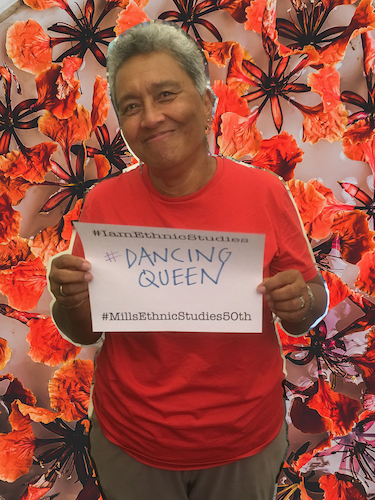
DO IT YOURSELF: Feminist Zoom Dance Parties
- Create an email list of friends, family, colleagues, and co-conspirators you’d like to invite. Make sure your invite list reflects the safe space you’d like to create.
- Establish a day of the week and a time that potentially works for all invitees’ time zones and schedules.
- Begin making a playlist on Spotify, Apple Music, iTunes, or music player of your choice. This playlist may be hand-selected by you or created collaboratively with friends. Feel free to use my Black and Asian Feminist Solidarities playlist on Spotify as a starter!
- Using your Zoom Pro account (or a friend’s), schedule a recurring meeting for the established time, and copy the meeting invite code.
- Send out this meeting invitation by email or a Google Calendar invitation. Allow people to come as they are; keep the boundaries loose and pressure-free. (Note: If your invite list is large and not everyone knows each other, it may be best to send out weekly emails with all invitees BCC’ed.)
- When the party starts and attendees join the Zoom, utilize the “Share Screen” function on the bottom of the window, toggle over to “Advanced” settings at the top of the pop up, and select “Music or Computer Sound Only” to begin sharing your device’s audio.
- Start the music and start dancing (or just listening—no pressure or requirement to move)!

